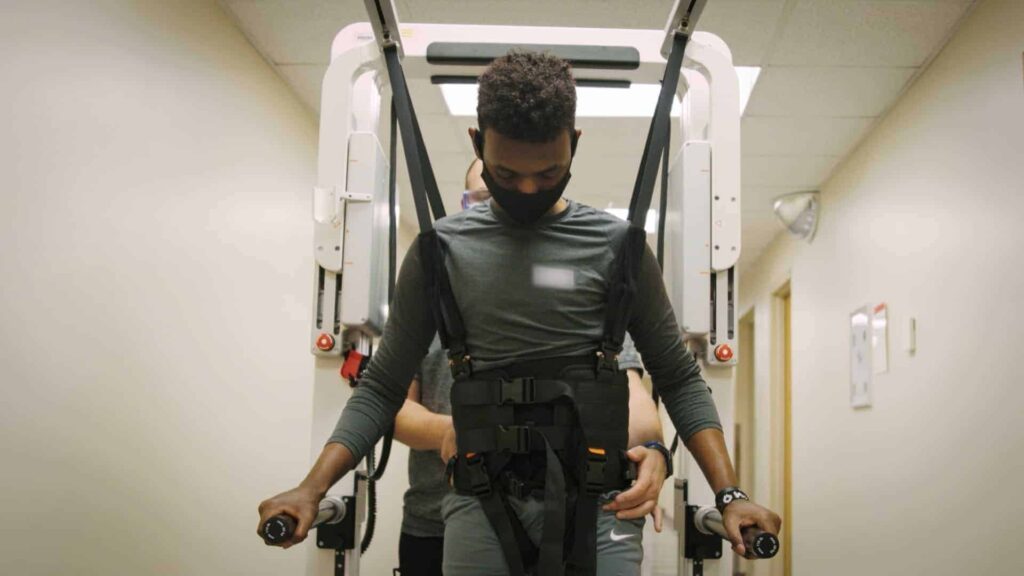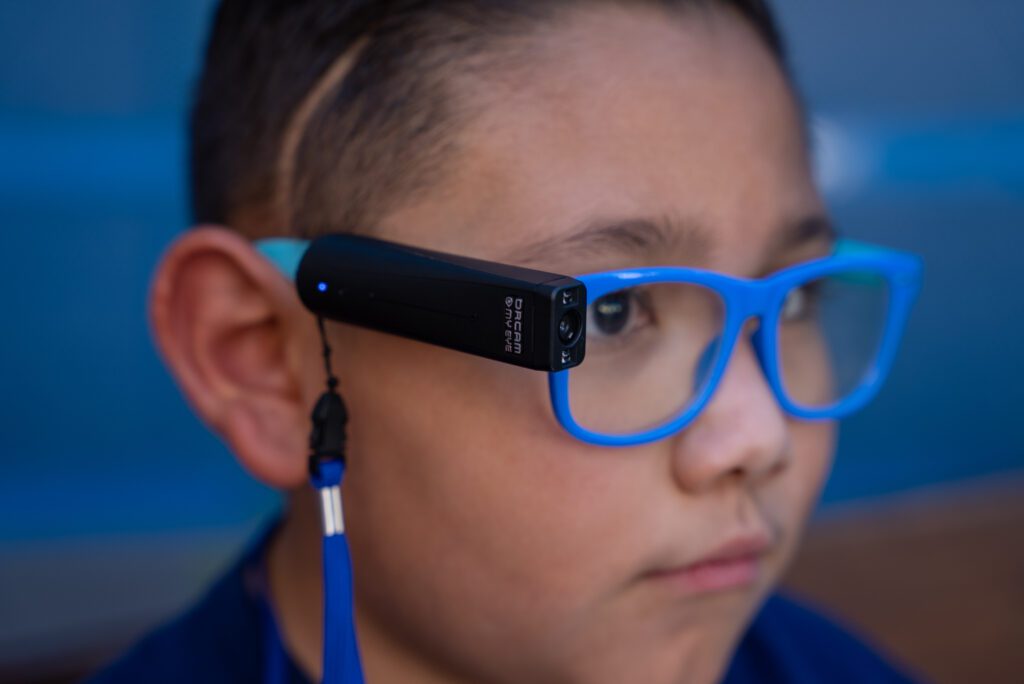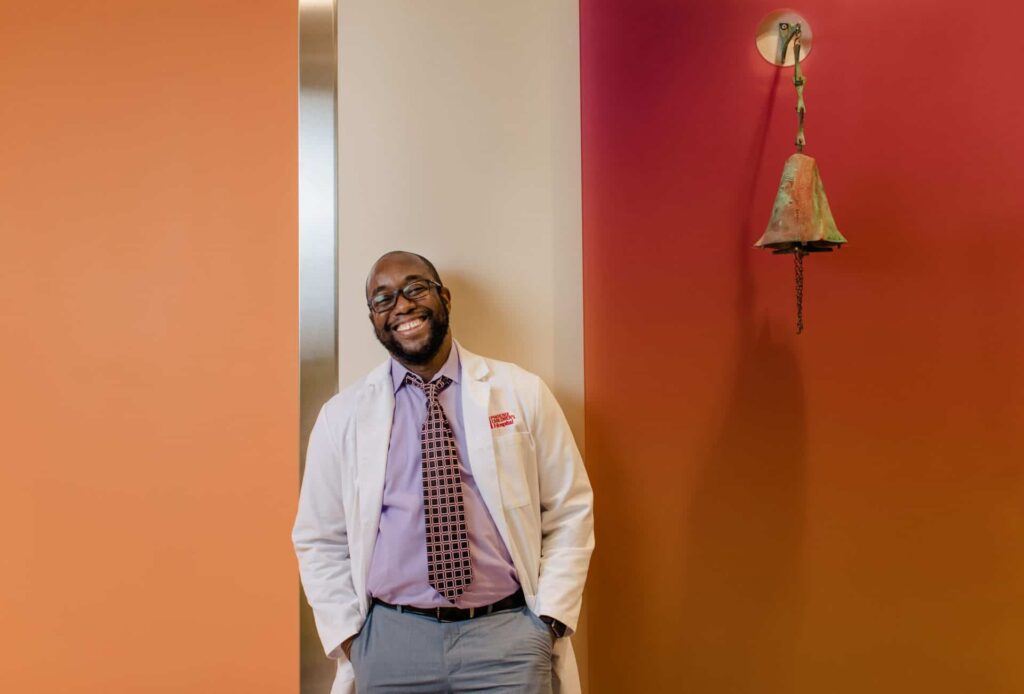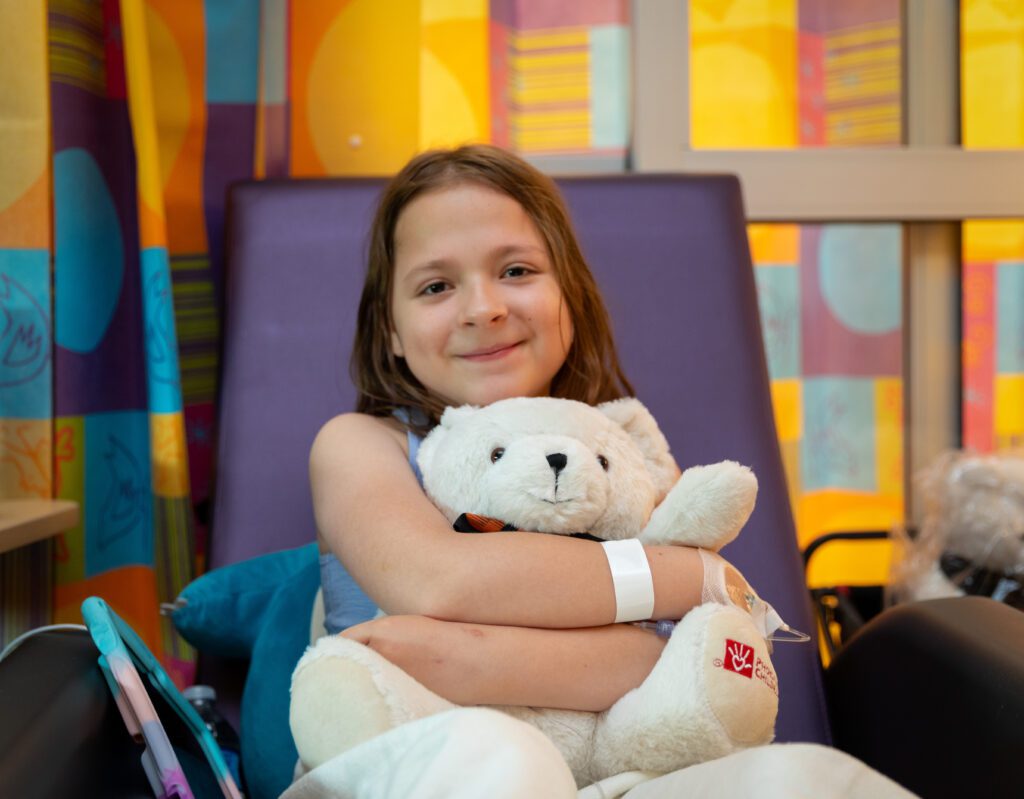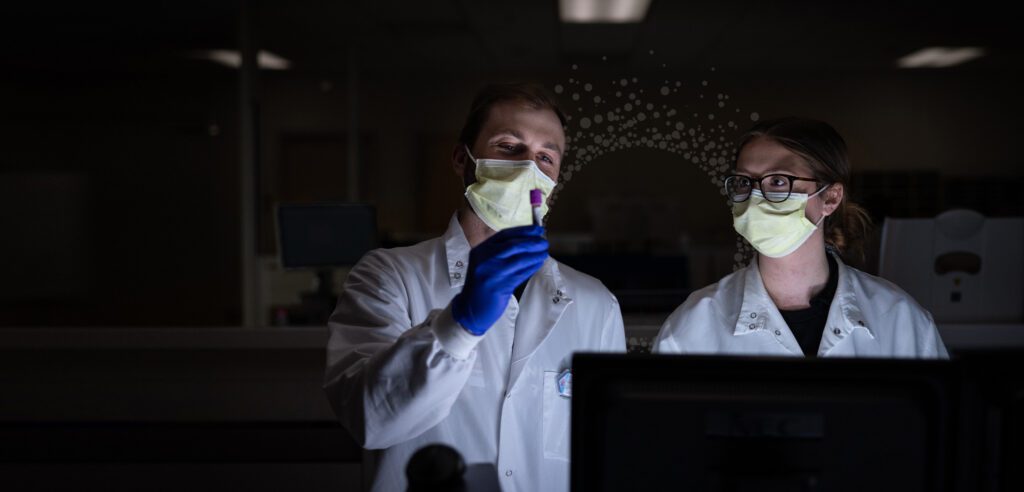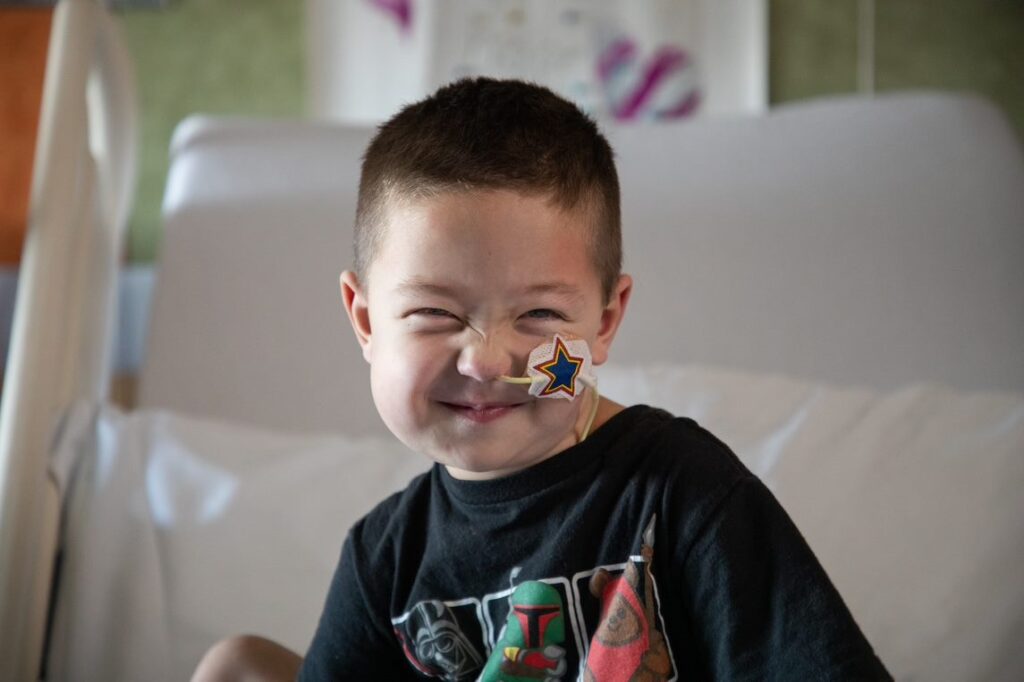When people ask neurologist Saunder Bernes, MD, who has worked at Phoenix Children’s for 37 years, when he’s going to retire, he says he doesn’t know. After all, it’s too exciting a time in medicine. “To be able to offer a family treatment, if not a cure, for diseases we never thought we’d be able to, is the reason I continue to work,” Dr. Bernes says.
Dr. Bernes is just one of the hundreds of Phoenix Children’s physicians driving advancements in the rapidly evolving landscape of pediatric health care. From expanding medical knowledge and addressing unmet needs to advancing personalized medicine and fostering multidisciplinary collaboration, innovation is a core tenet of Phoenix Children’s mission.
“Innovation—it’s in every single thing we do,” says Jared Muenzer, MD, MBA, chief physician executive at Phoenix Children’s and COO of Phoenix Children’s Medical Group. “It’s in the way we approach problems at every level, and we’re so fortunate that [President and CEO Robert L. Meyer] gives us the freedom and support to do it.”
Dr. Bernes and other physicians at the Barrow Neurological Institute at Phoenix Children’s show how research and innovation can help patients and families walk forward.
Miracle Drug: One Dose Changes a Family's Future
Ashley and Joshua’s son, Christopher, was born a seemingly healthy boy in 2017. When he didn’t start walking by 20 months, Christopher was diagnosed with spinal muscular atrophy (SMA), a genetic disease causing severe muscle weakness that can affect not only a child’s ability to walk but to eat, speak and breathe. Severe forms of SMA can cause lifelong disability and even death.
For a long time, there were no approved treatments for SMA, which affects one in 15,000 babies born in the U.S. While health care teams did everything they could to provide patients with nutritional and respiratory support, there was nothing to improve motor function.

By the time Christopher was diagnosed with SMA, there was a treatment available that could stop the progression of the disease. However, it must be administered every four months for the rest of the patient’s life. Though Christopher was progressing well, the toll that the ongoing treatment took on him and their family made the couple question whether they wanted to have a second child. SMA is a genetic disease, and they knew that if they had another baby, that child might have SMA, too.
But the release of Zolgensma in 2019 changed everything. Dr. Bernes knew the drug could be a life-changing treatment for families like Ashley and Joshua’s. While Zolgensma doesn’t have the power to reverse SMA symptoms in patients like Christopher, the one-time gene-therapy treatment can increase the likelihood of normal motor development if administered before symptoms appear.
In 2020, Ashley and Joshua welcomed Emily into the world. Three days later, they learned through genetic testing that Emily also had SMA. “It should have been devastating news,” Ashley says. “But I felt hope in Zolgensma. I believed we could stop the disease in its tracks.”
Dr. Bernes did, too. At just under 6 weeks old, Emily received her one and only dose of Zolgensma at Phoenix Children’s. “That day I remember feeling anxious and exhilarated,”
Ashley says. “I didn’t want to wait a year to see if she would take those first steps that Christopher missed out on, which is silly because as a mom, you want to enjoy those first few months.”
Emily took her first steps at 14 months old. Today, 4-year-old Emily is symptom-free. She loves to dance, play soccer and ride her scooter around her neighborhood. “Most of the time, we don’t even think about the fact that she has SMA,” Joshua says.
The treatment that Christopher receives, Spinraza, also stops the progression of SMA, but because he was not diagnosed until after symptoms appeared, he still experiences some effects of the disease. But even though Christopher hasn’t met all his developmental milestones, his strength and mobility have greatly improved. “It’s been exciting to watch his development,” Dr. Bernes says. “I’ve known Christopher since he crawled, and now, he can walk by himself, and his upper extremities are stronger or equal to most kids his age.”
Joshua says he’s pleased with his son’s progress, too. “If Christopher hadn’t received treatment, now as a 6-year-old, he would likely be in a power wheelchair,” he says.
Progress in understanding SMA is rapidly evolving, propelled in part by ongoing research at Phoenix Children’s. Dr. Bernes is actively involved in two clinical trials dedicated to studying medications that enhance muscle strength, involving patients like Christopher.
“The timing of everything is surreal,” Ashley says. “Having kids in this time when the medical field is exploding is a blessing, and having a hospital that keeps up with all the new treatments is even better.”
From Wheelchair to Mountaintop: Gianna's Inspiring Story

At 8 years old, Gianna was diagnosed with dystonia, a movement disorder that affects about 250,000 people of all ages in the U.S. The neurological condition causes signals from the brain to become “out of sync,” causing involuntary muscle contractions.
People who have dystonia experience symptoms including uncontrollable twisting, repetitive movements, and abnormal and painful postures. “If you’ve ever experienced a charley horse, you’ve experienced a mild form of dystonia,” says Michael C. Kruer, MD, director of the Pediatric Movement Disorders Program at Barrow Neurological Institute at Phoenix Children’s.
Dystonia can affect any part of the body—including the arms, legs, head and neck, or even specific muscle groups like the vocal cords—and is often debilitating. The intensity of the symptoms can also vary over time. “Many kids with dystonia can have chronic, near-constant symptoms but also have symptoms that come and go,” Dr. Kruer says. “Their symptoms can get much worse when they are sick or stressed and can be triggered by common things like a touch, a startle or emotion.”
Dystonia is often treated with medication, but it doesn’t work for everyone and may result in unpleasant side effects, including drowsiness, depression and insomnia. Severe dystonia is particularly difficult to control with medication alone.
By 12, Gianna’s dystonia had gotten bad enough that she had to use a wheelchair to get around school. Her mother, Nora, recalls how much time getting the wheelchair in and out of the car would add to outings. “It came apart in four different pieces,” she says. “So anytime we went anywhere I’d have to take it apart, and then we’d have to get there early so I could find parking and reassemble it again.”
Then Dr. Kruer told Gianna and Nora about deep brain stimulation (DBS), a surgical treatment for severe dystonia that historically was reserved for adult patients. “What we’re dealing with is essentially elective brain surgery, which is a really scary proposition for most families,” he says. “But over the years we’ve figured out ways to make DBS more and more effective, which makes us more confident using it earlier and earlier.”

During the procedure, surgeons implant thin, flexible wires called electrodes into specific areas of the brain that control movement. They then implant a small pacemaker-like device called a neurostimulator under the skin of the patient’s chest below the collarbone. Once programmed by a neurologist, the neurostimulator delivers steady electrical pulses to correct abnormal or overactive brain rhythms that are causing involuntary muscle contractions and movements. The treatment isn’t available everywhere.
“Phoenix Children’s is one of a handful of health systems that offer pediatric DBS, a form of minimally invasive neuromodulation that uses technology to help brain cells to fire more normally,” Dr. Kruer says.
At first, Nora was skeptical. “It was just really overwhelming in the beginning,” she says. “I mean, any mother, when they hear brain surgery—it’s really scary. Plus, people were telling us it wouldn’t work.”
And sometimes DBS doesn’t work. Research suggests that an average patient who undergoes DBS has a 35% improvement in symptoms. Fortunately for Gianna, Dr. Kruer and his colleagues had recently figured out a way to optimize the treatment for pediatric patients.
“One of the biggest challenges we’ve faced with DBS is that there is a delay between when we program a child’s neurostimulator and when the dystonia improves. It doesn’t usually happen right before our eyes—it often takes days or weeks for the movement disorder to improve,” Dr. Kruer says. “This ‘set-check-adjust’ process can take several weeks, which impacts our patients’ quality of life.”
- “It’s really an exciting time, because we know more about the brain than ever before.”Michael Kruer, MDDirector, Pediatric Movement Disorders Program at Barrow Neurological Institute at Phoenix Children’s
So Phoenix Children’s found a solution. Neurologists at the Barrow Neurological Institute monitor and record a child’s brain rhythms with neurostimulators. BrainSense technology allows Dr. Kruer and his colleagues to have real-time brain activity data on tablets.
“Having such exact information has been an absolute game changer,” he says. “We can make adjustments during their visits and immediately see the results on the monitors, which is enabling us to optimize their settings much better.”
Ultimately, Nora decided DBS would be the best option for her daughter, and Gianna had the surgery in March 2023. Not long after, she was able to walk without assistance. By fall, she started riding the bus to school again. And during her 2023 winter break, Gianna climbed South Mountain with her brother. “I mean, that’s amazing,” Dr. Kruer says. “She went from not being able to walk to hiking an entire mountain.”
But Phoenix Children’s isn’t stopping there. To continue to improve DBS for children with dystonia and other movement disorders, Dr. Kruer serves on the executive committee of PEDiDBS, an international consortium of health systems that collects and shares a registry of clinical DBS data. The consortium allows Phoenix Children’s neurologists to partner globally with other physicians and scientists to study how best to use DBS technologies to help kids.
“It’s really an exciting time, because we know more about the brain than ever before,” Dr. Kruer says. “There’s still an awful lot we need to learn, but we’re starting to offer surgeries and treatment options like this to more and more of our patients and their families.”
To learn how you can help advance pediatric neuroscience, contact Jana Earnest, senior philanthropy
officer, at 602-933-1857 or jearnest@phoenixchildrens.com.




